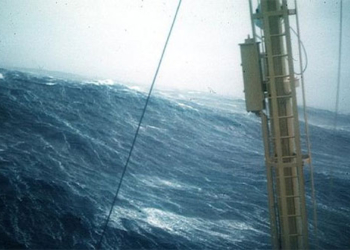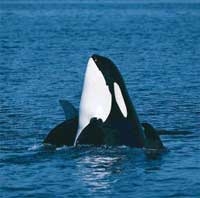This giant organism possesses a unique ability to address climate change issues for coastal communities that many countries can apply.
Climate change is one of the pressing issues that many countries around the world are currently facing. Climate change can lead to numerous effects on water resources, food supplies, cause extreme weather phenomena, and directly impact the lives of humans and all forms of life on Earth…
So, how can we respond to climate change?
According to scientists, there is an organism that can assist humanity in this regard. That is seagrass.
What is Seagrass?

Seagrass is a plant that can help mitigate global warming. (Photo: Jay Fleming).
In fact, seagrass includes dozens of species of flowering plants that live underwater. This plant has the ability to produce energy through photosynthesis by absorbing light. Similar to its terrestrial relatives, seagrass has roots, leaves, and can even produce seeds.
Experts state that seagrass typically grows in coastal salty waters worldwide. They are concentrated in shallow waters, where there is ample sunlight. Seagrass can form extensive meadows covering thousands of square kilometers.
Seagrass meadows can also reinforce coastlines, reduce heat, provide habitat for fish, shellfish, migratory birds, and clean the water. At the same time, seagrass stores up to 5% of carbon dioxide (CO2) and pumps oxygen (O2) into the ocean.
This is not a high-tech invention; rather, it is seagrass, one of the earliest flowering organisms in nature.
Seagrass can be found on every continent on Earth except Antarctica. This special plant is considered one of the most powerful climate solutions on Earth, yet it has not been fully utilized.

Seagrass meadow in Shark Bay, Australia. (Photo: BBC).
The Unique Ability to Address Climate Change
Seagrass plays a crucial role in carbon sequestration. As a result, carbon will be stored in the environment, rather than freely floating in the atmosphere, which further contributes to global warming.
According to the New York Times, scientists point out that restoring seagrass is a tool that coastal communities can use to tackle climate change. This was also one of the discussion topics at the recent climate change conference attended by business leaders, scientists, cultural figures, and policymakers in Busan, South Korea, on May 25 and 26.
Scientists, non-governmental organizations, and volunteers worldwide are also working hard to restore seagrass. Although it may not be possible to return to its original state, scientists hope that these seagrass meadows can be expanded and developed much more than their barren state after destruction.
For example, in Virginia (Australia), with the help of dedicated researchers, seagrass meadows are gradually being restored. This helps to clear the water and stabilize the coastline, thereby attracting organisms that once thrived back to the area. However, the scientific community believes that seagrass has not received the attention it deserves.
Efforts to Restore Seagrass

Eelgrass from the restoration project in Virginia. (Photo: Jay Fleming).
It is impossible to know exactly how much seagrass has been lost, as scientists do not know how many there were initially.
In reality, only about 16% of the global coastal ecosystem is considered intact. Among them, seagrass is one of the most severely affected organisms. According to Dr. Matthew Long, a marine chemistry and geochemistry scientist at the Woods Hole Oceanographic Institution, studies estimate that up to one-third of seagrass worldwide has disappeared in recent decades.
Dr. Long states: “Globally, every 30 minutes, an area of seagrass equivalent to a football field disappears. We lose about 5-10% each year.“
This expert further shares that seagrass is a plant negatively impacted by various harmful global factors such as deoxygenation, ocean acidification, and rising temperatures.
Additionally, local factors also contribute to the wilting of these seagrass meadows, primarily due to water pollution. On the other hand, the flowering and decomposition processes of algae also affect seagrass.
Although the impact of climate change and human activities has led to the rapid decline and disappearance of seagrass meadows in recent decades, this is not a new problem.
According to Dr. Bo Lusk, a scientist from the Volgenau Virginia Coastal Reserve of the Nature Conservancy, on the Eastern Virginia coast, in August 1933, overharvesting of scallops and a powerful storm wiped out a vast area of eelgrass. As a result, decades later, eelgrass no longer appeared on this coast.
By 1997, a few people spotted patches of eelgrass on the shore and believed they may have grown from seeds in Maryland and drifted south.
After many years of experimentation, scientist Robert J. Orth at the Virginia Institute of Marine Science discovered a very successful method for restoring seagrass. Accordingly, in the spring, scientists and hundreds of volunteers collected seeds and treated them in the summer, then buried them in sediment in the fall.

Scientists and hundreds of volunteers collected seeds in Virginia to bury in sediment in the fall. (Photo: Jay Fleming).
Dr. Lusk states that since 2003, when the seagrass restoration efforts began at the Volgenau Virginia Coastal Reserve, scientists and volunteers have sown about 242 hectares of seeds, and today this plant covers approximately 4,064 hectares.
However, experts believe that the success of the project in Virginia is also difficult to replicate globally.
Dr. Lusk believes: “If the Nature Conservancy had not protected the land and purchased coastal segments for conservation 50 years ago, we likely would not have the water quality we have today, and this project could not have been as successful.“
Moreover, according to this expert, restoring seagrass could take decades. In this process, community involvement plays a crucial role.
Dr. Richard Unsworth, an Associate Professor of Biology at Swansea University, states: “The actions of fishermen, the views of boat owners, and water quality issues can create a complex cultural-social problem.“
However, in the long run, with the cooperation of the entire community, this will be an incredible success.
Community involvement is considered an essential part of the efforts to successfully restore seagrass, as collecting and planting millions of seeds will require significant effort.
Currently, the Seagrass Project has developed a website and app called Seagrass Spotter, allowing users to upload photos of seagrass in nature. This will help researchers verify and fully map the extent and types of seagrass around the world.
Evidence shows that the Shark Bay, off the coast of Western Australia, has been a significant discovery. Specifically, researchers at the University of Western Australia have found a seagrass meadow stretching approximately 200 km2 (equivalent to the size of Cincinnati in Ohio, USA) in Shark Bay and have begun investigating its genetic diversity.

In addition to sequestering carbon, seagrass can make water clearer. (Photo: Getty Images).
It turns out that this plant is called ribbon weed or Posidonia australis. This seagrass not only survived ancient climate change but also expanded. It is estimated that the seagrass in Shark Bay has undergone up to 4,500 years of growth. To date, the Posidonia seagrass in Shark Bay is considered the largest living organism in the world.
According to Dr. Jane Edgeloe from the University of Western Australia, the lead author of the study, after collecting and examining genetic indicators to discover how many seagrass plants are in this meadow, the results were surprising. It turns out that just one seagrass plant has spread hundreds of kilometers in Shark Bay.
Dr. Lusk notes that completely restoring seagrass beds is not feasible due to global warming and ocean chemical changes. However, the efforts to restore seagrass are still worthwhile. This is because seagrass has remarkable capabilities for carbon storage and coastal protection.





















































